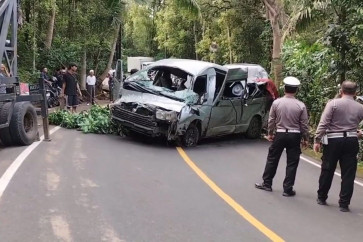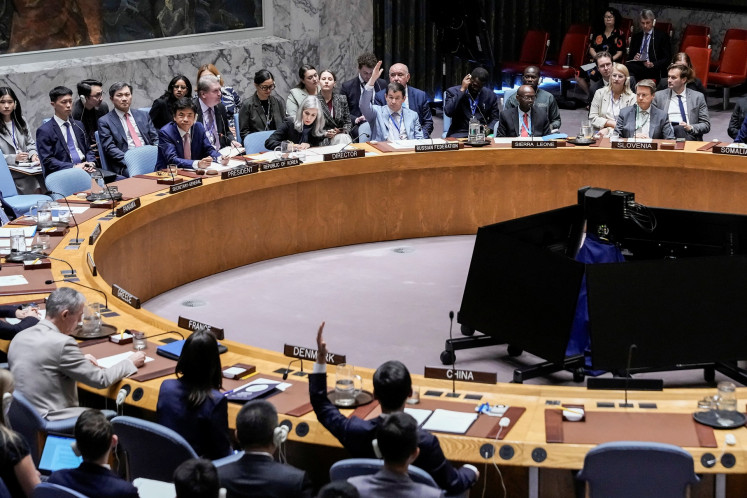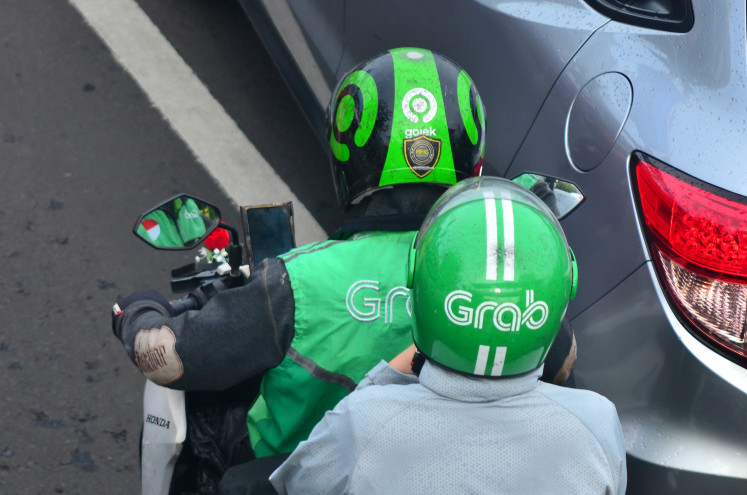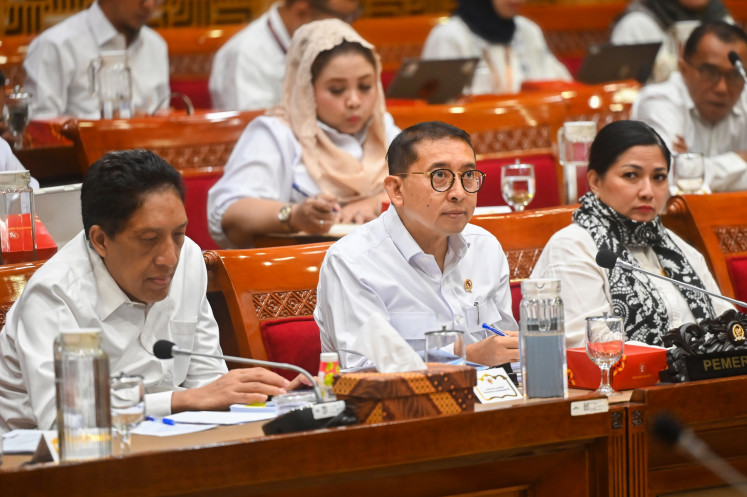Popular Reads
Top Results
Can't find what you're looking for?
View all search resultsPopular Reads
Top Results
Can't find what you're looking for?
View all search resultsMuara Angke swamped with tons of plastic
Mucky task: Sanitation workers tackle garbage piling up in what should be a mangrove area in Muara Angke, North Jakarta, on Sunday
Change text size
Gift Premium Articles
to Anyone
M
span class="caption">Mucky task: Sanitation workers tackle garbage piling up in what should be a mangrove area in Muara Angke, North Jakarta, on Sunday.(JP/Wendra Ajistyatama)
Instead of pristine water and mangrove forests, visitors to the seashore of Muara Angke in North Jakarta will find mountains of trash.
Plastic bottles and food and beverage packaging pile up to a height of 1.5 meters in some parts of the area of around 3,750 square meters.
A clean-up organized by the regency of Thousand Islands and the North Jakarta Environment Agency, which started Saturday, has seen around 19 tons of waste lifted so far, according to agency head Yusen Hardiman.
“We have deployed 400 teams to clean up the waste,” Yusen said on Sunday.
The agency aims to complete the clean-up within a week with the help of an amphibious backhoe from Jakarta’s water body sanitation unit.
Yusen said more equipment could be deployed in the coming days if necessary.
The waste will be taken to the Bantar Gebang dump site in Bekasi, West Java.
Muara Angke mangrove community head Risnandar, whose group is participating in the effort, said the location had been intended to be used for milk fish farming beginning in April.
“However, in early February, the wind blew very strongly, and huge waves lashed the ponds on Feb. 13, carrying more garbage,” Risnandar told The Jakarta Post.
He added that the strong wind and waves had only hit the location for three days, but that was enough to leave behind tons of garbage when the seawater receded.
Thankfully, the ponds have yet to be filled with milk fish seed, but facilities for the ponds built by
the community were damaged by the waves.
Riskandar said strong wind was an annual occurrence that would usually last from December until February and leave behind garbage on the shore. In previous years, however, the amount of garbage would be smaller, and most of it would go back to the sea.
This year, he added, the wind and the waves were particularly strong, resulting in more garbage covering the area.
“Therefore, we plan to plant mangroves instead of continuing with the milk fish ponds. We hope the mangroves will act as a fortress for the shore,” Riskandar said.
Apart from that, mangrove forest had proven important for turning marine environments into habitats for a variety of fish, shrimps and crab, which would also directly help local fishermen.
Collaborating with PT Pembangkitan Jawa Bali (PJB), a subsidiary of state-owned electricity firm PLN, the community aims to plant 10,000 mangroves next month.
The mangroves are intended to act as a natural coastal defense against large waves by the end of the year.
The community has planted 27,000 mangroves since 2008 in an area of 1.5 hectares known as the Mangrove Ecomarine Forest, which was established in a location full of waste originating from both the sea and the land.
It now serves not only as a protection against coastal abrasion, but also as a place for breeding fish, and as a tourist attraction.
Separately, Jakarta Governor Anies Baswedan said he had put in a request with the Maritime Affairs and Fisheries Ministry for nets to filter waste out of rivers throughout the city.
Anies argued that to solve the garbage problem in Muara Angke, the administration should begin with efforts downstream.
“[There is a problem] downstream, in the middle and upstream. So, we will prepare nets to filter waste out of rivers in Jakarta,” Anies said.










